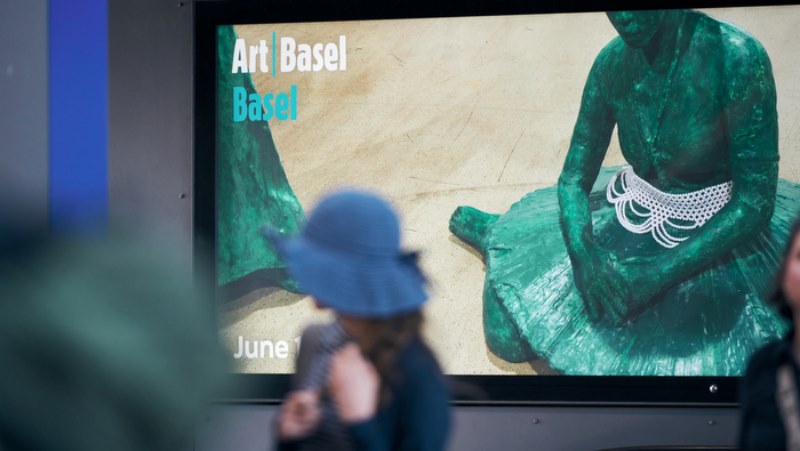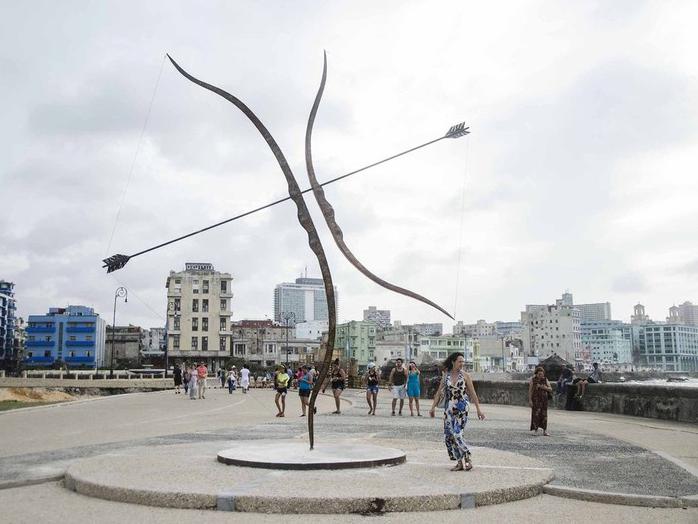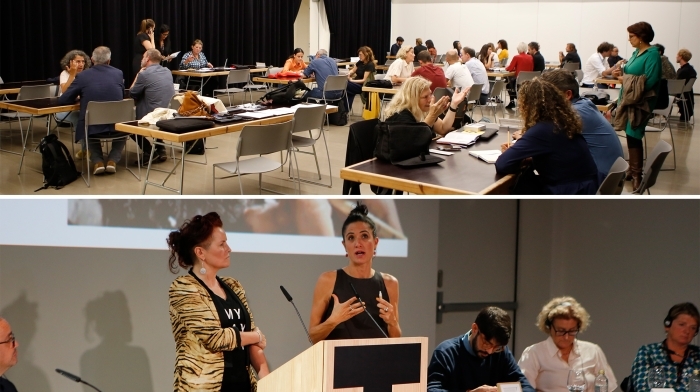By: Clotilde Serrano
Photo: Yander Zamora
From La Punta Fortress to Maceo Park…
No, it is not carnival time but it looks as if it was... The exhibition “Detrás del Muro” (Behind the Wall) has opened the one-month long celebration in Havana, precisely in one of the busiest sections of Havana’s Malecón (sea wall drive), and not with music or dance but with one of the most complex artistic manifestations: plastic arts. For this second time –the project had already been presented at the 11th Biennial Art Exhibition- “Detrás del Muro” gathered 60 artists who have brought some 50 works to the ongoing 12th edition. The exhibition allows for a dialogue with viewers, who enjoy the different proposals from their own points of views, experiences or maybe knowledge about the styles used by some of the creators. But a lot more hangs around “Detrás del Muro,” a call supported by a curatorial idea very well conceived for the place chosen: the wall, the border, a bench-couch, land and sea; a special place for people living in Havana and for all Cubans alike; a place of required visit for Cuban artists, both living in the country or abroad. As the result, the invitation made by the curatorial team headed by Juan Delgado and also including Elba Rosa Castro and José Fernández reached a larger number of participants.
THE TOUR…
I cannot ignore Coyula’s words for the catalog of the exhibition’s fist edition for the 11th biennial. The winner of the 2001 National Architecture Prize wrote: The shape of the coastline along the sea wall drive, which resembles a letter S, allows seeing the city and the sea at the same time from any point. The exhibition members have taken this into account while setting up their works.
Close to La Punta fortress is Stella, a work made by Florencio Gelabert that consists of burned trunks over Plexiglas mirrors, a call to protect and preserve the environment. I cannot mention them all but it’s worth highlighting the large format bronze sculpture made by Rafael San Juan: “Primavera” (Springtime), which should be on display there forever. Meanwhile, Liudmila López uses a sled to simulate a red high-heel shoe, enlivening a children’s area that had been inactive. In a section that once had public restrooms, Arley del Rio set up her work Resaca (Undertow), a simulated beach area with deck chairs and umbrellas, alluding to passers-by’s need for taking a swim and enjoying some fresh air under the shadow. Also captivating the attention is Rachel Valdés’s blue bucket which, like Juan Delgado said, invites to think about what lies far beyond the blue.
Some of the greatest Cuban artists who had already participated in the previous edition with their works for “Detrás del Muro” are Manuel Mendive, with his piece “Mi energía y yo” (My Energy and I) and Roberto Fabelo with “Delicatessen.”
Artists from the United States, Mexico, Spain, Bolivia, the Dominican Republic, Morocco and Germany, as well as Cubans living abroad have their works on display along the Malecón, featuring installations, paintings, photos, and sculptures. These artists include José Parla with his work “Mis realidades segmentadas” (My Segmented Realities).
But Dukey Riley’s ice skating rink has undoubtedly been the greatest attraction, mainly for children. The other major pieces include “Salvación” (Salvation), a huge lifeguard chair made by Duvier del Dago, and “Opuestos” (Opposed), which features two large bronze bows with arrows in opposite direction, by Kadir López.
CONTINUATION…
Many of the artists who last year took part in the project “Detrás del Muro” have gotten involved in it this year too, because the experience has enabled to make the works accessible for everyone and to have monumental pieces on display in the open air, forgetting about the limits entailed by the galleries and complemented by the land-sea ambivalent element. A context marked by that huge bench-couch where people can meditate and share moments of sadness and happiness, but this time surrounded by artistic pieces that invite to reflection. The experience afforded by one entire month of art exhibits may well continue “behind this wall” if we are able to protect it and realize how valuable it would be to keep it there for all.
I quote Elvia Rosa Castro as saying in the first catalog: More than an exhibition, “Detrás del Muro” must be considered an event (…) Ambitious but precise, “Detrás del Muro” will serve as reference for similar initiatives, mainly because it changed the coastal landscape for some time…
May these initiatives continue so that the Malecón becomes a large gallery in the open air, also allowing viewers to cope with its unusual proposals and contribute to its protection.
Source: Cubarte
Related Publications
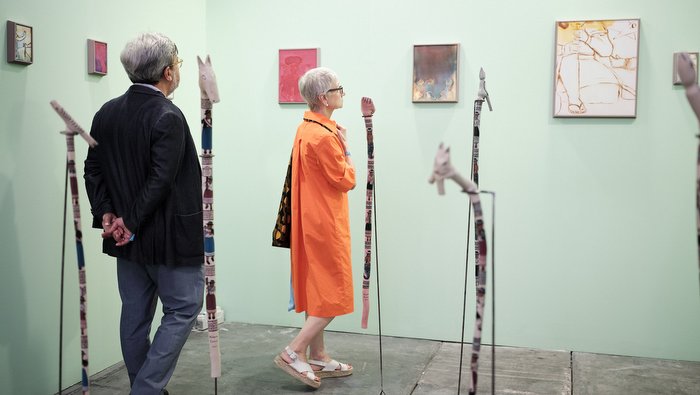
Apply now to Swab Barcelona
April 22, 2024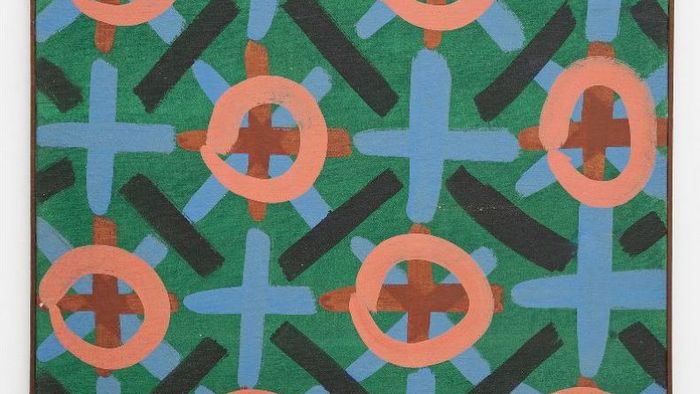
Waldemar Cordeiro: La Biennale di Venezia
April 16, 2024